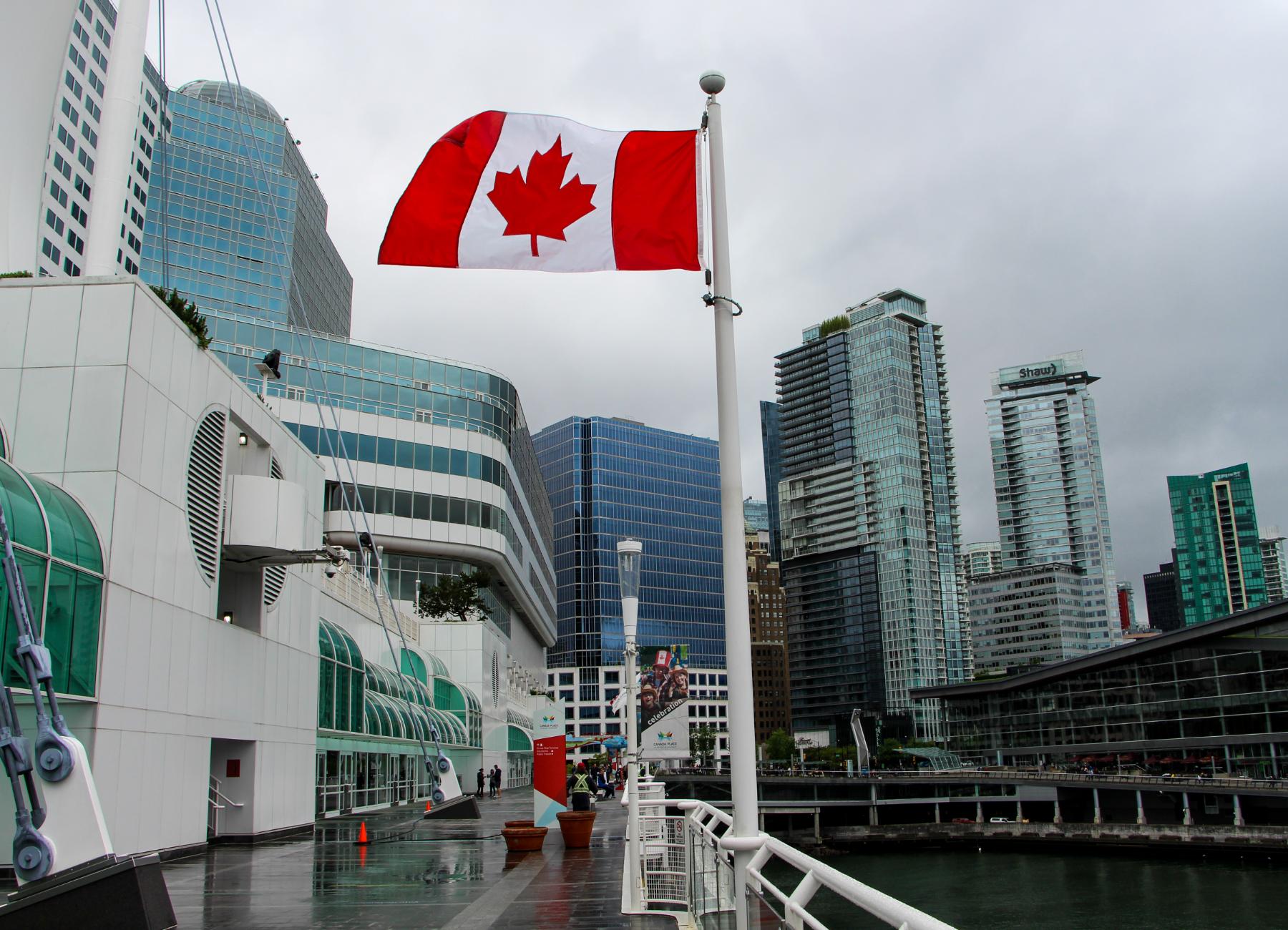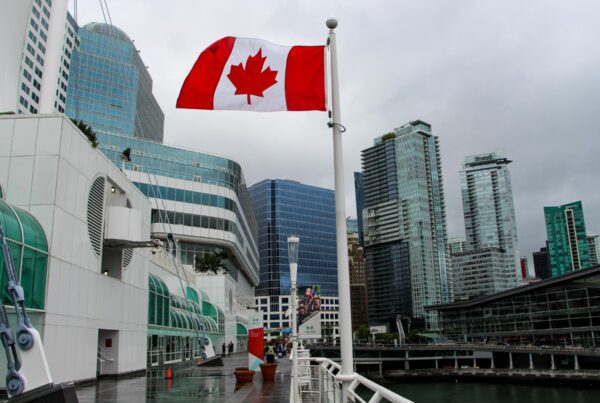Canada welcomes nearly 200,000 foreign skilled workers with temporary work permits each year.
Getting a Canadian temporary work permit can be complex for foreign nationals and Canadian employers alike. Your permit requirements change based on the type you need. Most closed work permits need an official job offer from a Canadian employer with a Labor Market Impact Assessment (LMIA). Our law firm’s clients often find these requirements and legal implications challenging.
Canadian temporary work permit rules keep changing. Recent updates have brought new challenges for employers and workers. To cite an instance, employers can now hire foreign workers for low-wage positions with positive LMIAs for just one year. Companies with more than ten employees must limit their low-wage foreign workers to 10% of their workforce. Legal guidance helps ensure you follow current immigration rules and boost your application’s success chances.
This piece will guide you through getting a temporary work permit in Canada. You’ll learn about different permit types and specific requirements for your case. Employers play a key role – they must get the needed Labor Market Impact Assessment and give you a formal job offer before most permit applications. We’ll help you understand the process whether you’re a skilled professional, an intra-company transferee, or qualify under special immigration agreements like NAFTA or CETA.
Understanding the Types of Temporary Work Permits in Canada
Canada has two main types of temporary work permits for foreign nationals who want to work legally in the country. The difference between these permits is vital for applicants because each type has its own eligibility rules and legal requirements.
Closed work permits and employer-specific conditions
Employer-specific work permits, also called closed work permits, limit foreign workers to one specific employer, job, and location listed on their permit. These permits spell out exact conditions such as your employer’s name, how long you can work, and usually where you’ll do your job. If you want to switch employers with this permit, you’ll need to apply for a new one or change your current permit. Many people work with immigration lawyers to make sure they follow Canadian immigration rules during this process.
These closed work permits come with strict limits. You can’t work for employers who broke immigration rules in the past. The permits also ban work at businesses that provide striptease, erotic dance, escort services, or erotic massages. Breaking these rules can lead to serious problems, and you might have to leave Canada.
Open work permits and who qualifies
Open permits are different from closed ones. They give workers much more freedom to work for almost any employer in Canada without being tied down to one job, employer, or place. Many people want these permits because they offer more job flexibility in Canada.
But open work permits aren’t for everyone. You might be able to get one if you graduated from a designated Canadian school, are married to a skilled worker or student, have refugee status, applied to live in Canada permanently, or joined special youth exchange programs. Immigration lawyers often tell their clients that some open permits might still limit the kind of work they can do or where they can work.
LMIA-required vs LMIA-exempt permits
Labor Market Impact Assessment (LMIA) marks a key difference in Canada’s temporary work permit system. An LMIA shows that a foreign worker is really needed and no Canadians or permanent residents can do the job.
The Temporary Foreign Worker Program (TFWP) handles permits that need an LMIA. The International Mobility Program (IMP) deals with LMIA-exempt permits. TFWP helps fill labor shortages, while IMP supports Canada’s economic, social, and cultural goals.
Special categories: NAFTA, CETA, and Intra-Company Transfers
International agreements create several special work permit categories. The Canada-United States-Mexico Agreement (CUSMA, formerly NAFTA) lets citizens from these countries get LMIA-exempt work permits for certain professional jobs. EU citizens can also work in Canada without an LMIA thanks to the Comprehensive Economic and Trade Agreement (CETA).
Intra-company transferees are another key group. Multinational companies can move their executives, managers, or specialized workers to Canadian offices without an LMIA. Immigration lawyers usually point out that these employees must have worked at the foreign company for at least a year before moving to a related Canadian business.
These categories and their legal requirements are key parts of getting a Canadian temporary work permit. Each option has its own eligibility rules, application steps, and legal details that need careful attention.
Legal Requirements and Eligibility Criteria
You need to meet specific legal criteria to get a Canada temporary work permit. These requirements change based on your situation and the permit type you need. We work as immigration attorneys, and we know that understanding everything in the application process is key to success.
Who can apply for a temporary work permit in Canada
The Canadian government has strict eligibility standards, whatever country you apply from. You must show that you’ll leave Canada when your permit expires. You need enough money to support yourself and your family while you’re here. A clean criminal record, good health, and no security risks are mandatory. You can’t work for employers listed as “ineligible” or those in adult entertainment services.
Your application process depends on where you are right now. If you’re outside Canada, you can apply before entering, but visa office rules vary by country. People already in Canada can apply if they have a valid study or work permit. The same goes for those with a temporary resident permit valid for six months or more, waiting for permanent residence, or have made a refugee claim. Regular visitors can’t apply for work permits from inside Canada.
Temporary work permit Canada requirements by permit type
Each permit type needs different documents. LMIA-based permits need an LMIA approval letter and a detailed job offer from your Canadian employer. LMIA-exempt permits usually need proof that you qualify under international agreements or special programs.
Everyone needs a valid passport, photographs, and proof they’re qualified for the job. If you’re bringing family, you’ll need documents showing your relationships. Quebec-bound workers must get a Certificat d’Acceptation du Quebec. The Application for Work Permit and Family Information forms are vital parts of your application. Wrong or missing information is one of the biggest reasons applications get denied.
Role of immigration lawyers in eligibility assessment
Immigration lawyers help you navigate this complex process. We help you pick the right permit category first. Many people file the wrong applications, which slows everything down. We make sure your documents are complete and accurate. Even small mistakes can lead to rejection.
Legal experts say having a Canadian immigration lawyer from the start can speed up your work permit process. We guide you through gathering documents and help you follow recent rule changes, especially about proper pay rates. If you get denied, we can help with appeals and new applications by fixing what went wrong the first time.
Step-by-Step Process to Obtain a Temporary Work Permit
Getting a Canadian temporary work permit involves several key stages. Each stage needs close attention to detail and must follow strict immigration rules. Our immigration law team helps clients navigate this process to meet all legal requirements.
Step 1: Employer applies for Labor Market Impact Assessment (LMIA)
Canadian employers need to get a Labor Market Impact Assessment from Employment and Social Development Canada (ESDC) before they hire foreign workers. This assessment shows that no Canadian citizens or permanent residents can fill the position and hiring a foreign worker won’t hurt the Canadian job market. The processing time varies by program. The Seasonal Agricultural Worker Program takes 8 business days. High-wage applications need 41 days, while low-wage positions take up to 45 days. Employers who want permanent resident streams might wait up to 240 business days. The LMIA application must have all documents, signatures, and fees to avoid any setbacks.
Step 2: Employer issues a formal job offer
The employer must give the foreign worker an LMIA approval letter and detailed job offer after getting a positive assessment. These documents are vital proof for the work permit application. Employers with LMIA-exempt positions must submit their offer through the Employer Portal and pay CAD 320.47 as a compliance fee. They’ll get an offer number that starts with “A” and has seven digits. Workers need this number for their application.
Step 3: Worker submits work permit application
Workers need a positive LMIA or employment offer number to submit their work permit application. Most people apply online through Immigration, Refugees and Citizenship Canada’s portal. The application package should include the job offer, LMIA papers or exemption proof, and documents that show the applicant’s job qualifications. Quebec jobs might need a Certificat d’acceptation du Québec (CAQ), but LMIA-exempt positions don’t need this.
Step 4: Permit is issued at the Canadian border or visa office
A Canada Border Services Agency officer usually issues the work permit when workers arrive in Canada after their application is approved. Some people can apply at a port of entry, though this option has limits now for certain groups, including Post-Graduate Work Permit applicants. Most permits are employer-specific (closed), which means holders can only work for the employer listed on the permit.
Additional requirements: medical exams, TRV, and biometrics
The process has other requirements too. Medical exams are a must for stays longer than six months or jobs in specific fields like healthcare. Applicants should complete these exams two months before they plan to start work to avoid delays. Some applicants might need a Temporary Resident Visa to enter Canada. They may also need to provide biometric information at a designated collection point.
Employer Responsibilities and Legal Compliance
Canadian employers who hire temporary foreign workers must follow strict legal requirements that change based on their work permit program. Our law firm regularly tells clients that failing to comply can lead to heavy penalties. These penalties can hurt their operations and damage their reputation.
Transition plans and record-keeping for high-wage LMIA
Canadian law requires employers seeking high-wage Labor Market Impact Assessments (LMIAs) to submit detailed transition plans. These plans must show how they will cut down their dependence on the Temporary Foreign Worker Program. The law requires them to commit to hiring and training Canadians while helping foreign workers get permanent residency. These plans become binding agreements between employers and Service Canada. Companies must keep all LMIA documents for six years starting from the employee’s first day. The records must show their recruitment efforts, job ads, employment contracts, and payroll details. Service Canada can inspect these records without warning.
Restrictions for low-wage LMIA applications
The federal government has put tight controls on low-wage LMIA applications. Employers can only have 10% of their workforce as temporary foreign workers in low-wage positions at each work location. Starting September 2024, the government won’t process low-wage LMIA applications in areas where unemployment is 6% or higher. This rule now applies to 24 major Canadian cities. Toronto stands at 8.6%, Calgary at 7.8%, and Vancouver at 6.6%.
Legal obligations under the International Mobility Program
The International Mobility Program (IMP) handles LMIA-exempt work permits. Employers must submit job offers through the Employer Portal. They need to give workers information about their rights in English or French before they start work. The law requires them to provide signed employment agreements and create safe workplaces. They must also help workers access healthcare when needed.
Consequences of non-compliance for employers
Breaking these rules can trigger various penalties. These range from warnings to fines of CAD 139,336.02 per violation, with a yearly cap of CAD 1.39 million. Serious violations can get employers permanently banned from the program. Their names might appear on Immigration, Refugees and Citizenship Canada’s non-compliance list. Immigration lawyers suggest that reporting accidental violations yourself can reduce penalties. This works best when employers quickly fix their mistakes.
Special Cases and Bridging Work Permits
Foreign nationals with unique circumstances have several specialized options beyond standard work permits. Immigration lawyers help their clients navigate these distinctive permit categories. Each category has its own eligibility requirements and legal aspects to think over.
Eligibility for Bridging Open Work Permit (BOWP)
BOWP is a critical legal solution for foreign workers who might lose their status while they wait for permanent residence decisions. Applicants must live in Canada with a valid work permit to qualify. They should have managed to keep their status as workers or be eligible for status restoration. The applicants must be principal applicants in permanent residence applications under eligible economic immigration programs. These programs include Express Entry streams, Provincial Nominee Programs, or the Quebec Skilled Worker Program. Their permanent residence application should pass the completeness check or get positive eligibility assessment, depending on the specific program. This bridging mechanism helps applicants avoid tough choices like leaving Canada temporarily or staying without work authorization.
Temporary work options for PR applicants
Temporary work authorization gives essential continuity to candidates in specific permanent residence streams. Atlantic Immigration Program candidates can get employer-specific permits valid for two years once they secure provincial referral letters. These permits work while their permanent residence applications move forward. In spite of that, these interim authorizations don’t guarantee permanent residence approval. Applicants need to submit complete documentation to prove they qualify under both temporary and permanent streams. This documentation has language test results, educational credentials, work experience proof, and provincial endorsement.
Work permits for spouses and post-graduates
Spouses and common-law partners of certain work permit holders might qualify for open work permits. This helps families stay together and integrate into the economy. The principal applicant’s work authorization should be valid for at least six months. They should work in National Occupational Classification skill levels 0, A, or B. Students’ spouses in specific degree programs can get open work permits that last as long as their partner’s studies. These programs include professional designations like Doctor of Medicine or Bachelor of Engineering.
Sector-specific permits: agriculture and seasonal workers
The Seasonal Agricultural Worker Program is a specialized pathway for citizens from participating Caribbean countries and Mexico. Qualified agricultural workers get permits that let them work with any SAWP employer in Canada. These authorizations give workers more mobility in the agricultural sector than standard employer-specific permits. The application process moves quickly for occupations that support essential services in agriculture and agri-food after getting provincial approval. These occupations are identified by specific National Occupational Classification codes.
Getting Help
Getting a Canadian temporary work permit becomes easier when you have professional help to boost your success chances. Foreign workers can access several helpful resources during their application process.
Immigration, Refugees and Citizenship Canada (IRCC) funds qualified professionals who provide free settlement services to eligible people in Canada (except Quebec). These services help temporary residents with work permits under specific employment programs such as the Atlantic Immigration Program or Rural and Northern Immigration Pilot. Palestinians who left Gaza after September 1, 2023, and participants in the Francophone Minority Communities Student Pilot (along with their families) can also access these services.
Settlement organizations provide detailed services that match temporary work permit holders’ specific needs. They help with Canadian life orientation, assess needs, and connect people to internal and external programs. These organizations also help with applications for essential documents like the Canada Child Benefit and Medical Care Program, and support temporary status permit extensions.
Our experience as immigration lawyers shows that settlement organizations offer valuable services like credential assessment, pre-employment preparation, and entrepreneurship support. Many organizations assess ESL levels and connect people to language training programs – vital steps for workplace success and future permanent residency applications.
Temporary foreign workers facing challenges have specific resources available. The Philippine Consulate General helps Filipino workers during emergencies. You can also get one-on-one support to understand your rights and responsibilities as a temporary foreign worker, including legal matters about contracts, LMIA terms, and paths to permanent residency.
Your rights matter under Canadian law. Service Canada takes reports of employer abuse at 1-866-602-9448 or through their online tool. Canadian law protects you from penalties or deportation if you report violations. You might qualify for an open work permit for vulnerable workers if your employer breaks compliance rules.
Each temporary work permit case comes with unique circumstances. We always suggest getting professional legal guidance when dealing with complex situations that need specialized knowledge of Canadian immigration rules.
Key Takeaways
Understanding Canada’s temporary work permit system is essential for foreign workers seeking employment opportunities. Here are the critical insights to navigate this complex process successfully:
• Most work permits require a Labor Market Impact Assessment (LMIA) from your Canadian employer before you can apply, making employer cooperation essential for success.
• Choose between closed permits (employer-specific) or open permits (work for any employer) based on your situation—open permits offer more flexibility but have stricter eligibility requirements.
• Follow the four-step process: employer gets LMIA, issues job offer, worker applies for permit, and permit is issued at border or visa office.
• Employers face strict compliance obligations including 10% caps on low-wage foreign workers and detailed record-keeping requirements that can result in penalties up to $1.39 million.
• Special permits exist for unique situations including Bridging Open Work Permits for PR applicants, spouse permits, and sector-specific options like agricultural workers.
• Professional legal guidance is crucial given the complexity of requirements and recent regulatory changes that continue to evolve in Canada’s immigration landscape.
The temporary work permit process involves multiple stakeholders and strict timelines, making proper preparation and understanding of legal requirements essential for successful applications.
FAQs
Q1. What are the basic steps to obtain a temporary work permit in Canada? The process typically involves four main steps: the employer obtains a Labor Market Impact Assessment (LMIA) if required, the employer issues a formal job offer, the worker submits a work permit application, and finally, the permit is issued at the Canadian border or visa office.
Q2. Can I apply for a Canadian work permit without a job offer? Generally, no. Most work permits require a valid job offer from a Canadian employer. However, there are some exceptions, such as open work permits for certain categories like international graduates or spouses of skilled workers.
Q3. What are the costs associated with obtaining a temporary work permit in Canada? The fees vary depending on the type of permit. For an open work permit, you’ll need to pay a work permit fee of CAD 215.97 and an open work permit holder fee of CAD 139.34. Fees for other types of permits may differ.
Q4. Are there any special work permit options for permanent residence applicants? Yes, the Bridging Open Work Permit (BOWP) is available for those who have applied for permanent residence under certain economic immigration programs. This permit allows you to continue working while your PR application is being processed.
Q5. What are the consequences for employers who don’t comply with temporary foreign worker regulations? Non-compliant employers can face severe penalties, including fines up to CAD 1.39 million annually, bans from hiring foreign workers, and public naming on the government’s non-compliance list. Employers must adhere to strict record-keeping and reporting requirements to avoid these consequences.








